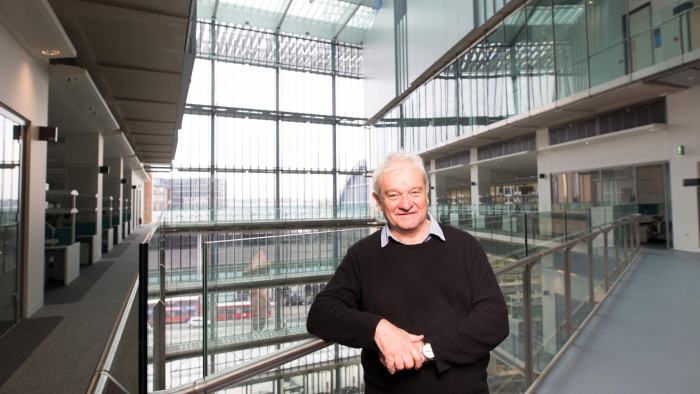Coronavirus has transformed work but risks snuffing out a creative spark


Roula Khalaf, Editor of the FT, selects her favourite stories in this weekly newsletter.
The future of work is now — at least that is how it seems. We have ticked lots of boxes in recent weeks . . .
More working from home — tick. Working flexible hours — tick. Fewer commutes — tick. Less time in face-to-face meetings — tick. Fathers spending more time at home with their children and family — tick. Becoming more like a “digital native” — tick. Reaching out to our communities — tick. Executives empathising with employees’ domestic situations — tick. We have also had experiences we had not expected: home schooling our kids, physical separation from our friends, only virtual meetings with colleagues.
During this short period of time we have altered a host of attitudes, behaviours and skills which will inform our future. To get a sense of the evolution of these attitudes, since March 17 (day one for me) I have kept a diary, written a series of columns, ran a number of webinars, and polled executives every week or two. Here is what I have found.
Many of us have been amazed at how quickly we became digitally agile and how our home-based technologies have (mostly) held up. Indeed, in a poll I ran on March 18 as part of the London Business School webinar series, only 2 per cent of the 3,000 participants responded “I find the technology frustrating”. I wonder if even five years ago we would have had the same experience. These digital lessons have created competencies and attitudes that will be the foundations for how we adapt in the future.
We have also learnt a great deal about home working and deepened our understanding of individual circumstances. Working from a home office alongside a working partner (as I am) is not the same as being a working parent with home-schooling responsibilities. Nor is my experience the same as being crammed into a small apartment with others. We have learnt viscerally what studies have shown: that home workers can be more productive if — and only if — they have an undisturbed working routine and a functioning home office.
Along the way many of us have realised how much we missed contact with others. In my March 18 poll the most popular response ticked was “I miss the social interaction of the office” — and that has only increased since.
How will these experiences, discoveries and feelings inform our adaptation in the near future? There is certainly much we do not know. But we do know that a damaging economic contraction is certain, and so inevitably strategic business focus will be on cost savings and productivity. It is that subtle combination of adaptation and productivity that must be the target of executive action.
It is clear that executives must act fast to build fair and reasonable working practices. That will mean tackling the challenge of remote working by supporting the creation of home offices, understanding the particular situation of each employee and enabling those with caring responsibilities to establish blocks of time in which they are “on” and “off”. We all need to become more sophisticated in how we use our new-found digital tools and skills so as not to be overwhelmed by the “always on” approach many of us have taken.
What of productivity? We have very little hard evidence of the impact of the pandemic on this. My hypothesis is that, when faced with accelerating deadlines, the dismantling of some bureaucratic processes and widening of new digital skills, productivity may have increased in some jobs — and certainly not decreased to the extent we might have imagined. We are an adaptable species and our capacity to work round situations when under pressure is extraordinary. In a poll I ran on May 7 with executives from 42 companies in 19 countries I heard pretty much that — 47 per cent believed that productive collaboration seemed stronger.
What concerns me is not short-term productivity but the threat to longer-term creative and innovative capacity. Here’s why. Small, fast-moving and digitally-enabled virtual teams are able to exploit the knowledge held among members that fuels speed and productivity. Yet this is rarely the route to innovation. Instead innovation comes from “novel combinations”, the basis of which are serendipity and chance encounters. These encounters are often face to face and rarely structured — they are the “water cooler” conversations.

That is why, for example, when Nobel laureate Paul Nurse created the organisational structure of the Francis Crick Institute in London, he deliberately brought together more than 1,300 research scientists in a single building. As he told me last year: “It’s a discovery process, getting different tribes working together, being truly creative.”
Before the pandemic, face-to-face encounters were the norm. For perhaps a couple of years to come, they will become a rare and precious asset. The challenge we face now is learning how to make the very most of these. To ensure that in a world that desperately needs creativity and innovation, we do not inadvertently stifle it.
Lynda Gratton is professor of management practice at London Business School. Her most recent book (co-authored with Andrew Scott) and out this month is “The New Long Life — a Framework for Flourishing in a Changing World”.
Comments